Introduction
How To Cut Cockatiel Nails: Caring for a pet cockatiel involves various responsibilities, and one important aspect of their well-being is maintaining their nail health. Overgrown nails can cause discomfort and even lead to injuries for these charming and intelligent birds. Therefore, knowing how to trim a cockatiel’s nails safely and effectively is crucial for any cockatiels sing owner. In this guide, we will provide you with essential tips on how to cut cockatiel nails, ensuring both the comfort and health of your feathered friend. With the right knowledge and a gentle touch, you can help your cockatiel maintain well-groomed and comfortable feet while fostering a strong bond with your beloved avian companion. Cockatiels, with their vibrant personalities and striking plumage, have become popular companions in the world of avian enthusiasts. These small parrots are not only known for their charming nature but also for their distinctive crest and, like all birds, require proper grooming to stay healthy and happy.
Among their grooming needs, nail care is a fundamental aspect that should not be overlooked. Trimming a cockatiel’s nails can be a bit intimidating for beginners, as it requires a delicate touch and a clear understanding of the bird’s anatomy. However, with the right guidance and a calm approach, you can learn to perform this task safely and efficiently, ensuring your cockatiel’s well-being and preventing potential problems such as snagged nails or injuries. In the following sections, we will delve into the step-by-step process of cutting a cockatiel’s nails, offer insights into when and why this grooming is necessary, and provide essential tips to make the experience as stress-free as possible for both you and your beloved feathered companion. By mastering this skill, you will not only contribute to your cockatiel’s overall health but also strengthen the bond you share with your feathered friend.
Cockatiels are not only cherished for their beauty and vocal talents but also for their playful and affectionate nature. To ensure their well-being, it’s crucial to provide them with proper care, including regular nail maintenance. Overgrown nails can cause discomfort and even affect a cockatiel’s ability to perch and move around comfortably. In this guide on how to cut cockatiel nails, we will explore the importance of this grooming task and discuss the tools and techniques required to do it effectively. We’ll also offer advice on how to create a safe and stress-free environment for both you and your pet during the nail trimming process. By learning how to trim your cockatiel’s nails with care and confidence, you can enhance their quality of life and continue to enjoy the companionship of this remarkable bird for years to come. So, let’s embark on this journey of responsible cockatiel ownership and nail care.
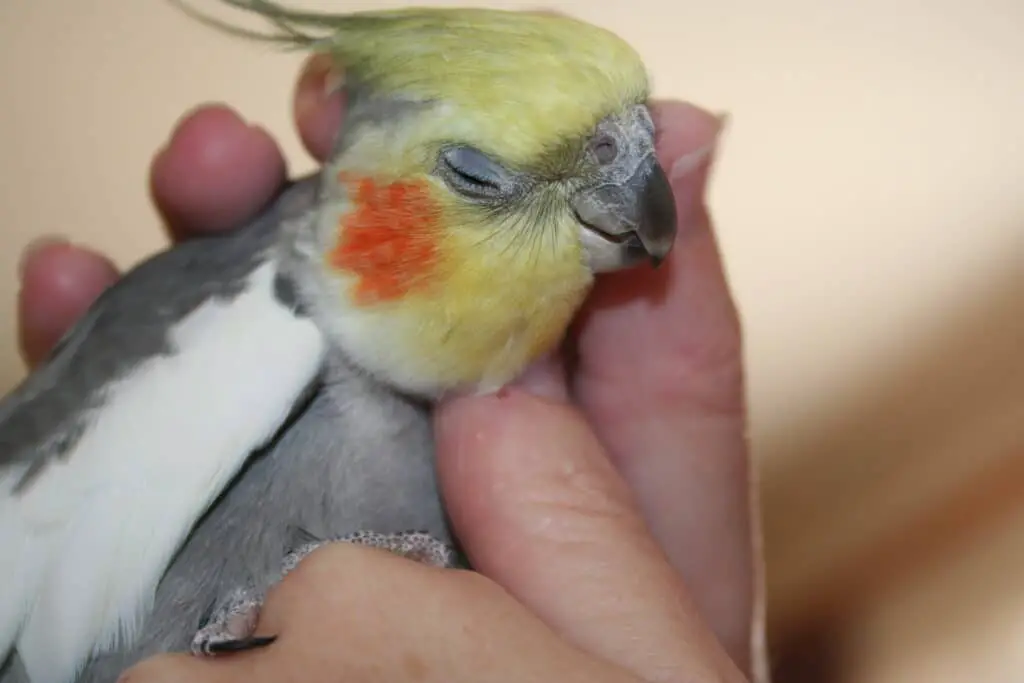
Do cockatiels nails need to be trimmed?
You need to give your cockatiel a nail clipping each time its nails start to overlap its toes so that it doesn’t walk on its nails. On average, this would be around once every two months. Walking on overgrown nails will prevent the toes from staying flat, which can cause joint pain to the bird in the long run.
In their natural habitat, cockatiels use their beaks and claws to climb, perch on branches, and keep their nails naturally worn down. However, in a domestic environment, these natural wear-and-tear mechanisms may not be sufficient, especially if the bird spends more time on perches that are not abrasive enough to wear down their nails.
Overgrown nails can lead to several problems for your cockatiel. They can become uncomfortable or even painful, affecting the bird’s ability to perch and move around properly. In severe cases, excessively long nails can cause injury by getting caught on cage wires or toys.
Pay close attention to your cockatiel’s nails. If they appear long and sharp, or if you notice your bird having difficulty perching or walking, it’s a clear sign that nail trimming is needed. Additionally, you might hear your bird’s nails clicking against hard surfaces as they walk, indicating the need for a trim.
The frequency of nail trimming can vary depending on the individual bird. Some cockatiels naturally wear down their nails more quickly than others due to their activity levels and perch choices. On average, nail trimming may be required every 4 to 6 weeks, but this can vary.
It’s essential to trim a cockatiel’s nails carefully and correctly. Cutting too close to the quick (the blood vessel inside the nail) can cause bleeding and pain. It’s advisable to seek guidance from a veterinarian, an experienced avian groomer, or a bird care expert if you’re unsure how to trim your cockatiel’s nails.
How do birds naturally trim their nails?
Most wild birds are naturally very active during the day and normally sit on a huge variety of perches of varying diameters and textures in their environments. This variety of surfaces, along with ordinary preening and grooming behavior, wears down their nails so that they do not overgrow.
One of the primary ways birds naturally trim their nails is by perching. When they land on branches, twigs, or other surfaces, the grip of their feet helps to wear down the outer layers of their nails. This process is gradual but effective, especially when birds spend a significant amount of time perching.
Birds often engage in climbing and exploration activities in their natural habitats. Whether they’re climbing tree trunks, foraging for food, or navigating through their environment, these actions can contribute to the natural abrasion of their nails.
Birds regularly preen their feathers, and during this grooming behavior, they may use their beaks to nibble at and trim their nails. While not as effective as other methods, it can help maintain their nails to some extent.
Some bird species, such as ground-feeding birds, use their feet and claws to dig for food. This digging action naturally wears down their nails as they scrape through soil or leaf litter in search of insects or seeds.
Environmental factors can play a role in nail wear. Birds in the wild may encounter abrasive surfaces, like rocks or rough bark, which can help naturally file down their nails as they move about their surroundings.
Do birds cut their own nails?
Lack of Natural Nail Trimming
Perching and gripping in the wild helps keep bird toenails short and trim. In captivity, it is up to pet parents to make sure their birds have short nails instead. You can provide this much-needed grooming for your pet to help simulate the experience they would have in the wild.
Birds primarily rely on perching to wear down their nails naturally. When they land on branches, twigs, or other surfaces, the pressure exerted by their feet helps to gradually wear away the outer layers of their nails. Over time, this constant friction contributes to keeping their nails at an appropriate length.
Birds often engage in activities that involve climbing, exploring, and foraging. These behaviors involve the use of their feet and claws, and as they move about their environment, they naturally wear down their nails.
While birds do not use their beaks to cut their nails as humans use clippers, they do engage in preening behaviors. During preening, birds may nibble at their nails, which can help to keep them in check. However, this process is not as effective as other means of nail maintenance.
In the wild, birds may encounter abrasive surfaces such as rocks, tree bark, and rough terrain. These natural elements can contribute to the gradual filing down of their nails as they go about their daily activities.
Is clipping a cockatiels wings bad?
For cosmetic appeal, some people prefer the outermost one to two feathers to be left untouched; however, many small birds, like budgies and cockatiels, may still fly when these feathers are left at the end. Ideally, the outermost feathers should always be clipped.
One of the primary reasons people choose to clip a cockatiel’s wings is safety. Clipping can prevent the bird from flying into hazards like ceiling fans, windows, hot stovetops, or other pets in the household. It can also make it easier to handle the bird during interactions.
Wing clipping can sometimes be a useful training tool, especially for birds that have behavioral issues or aggression problems. A clipped bird may be more manageable and less prone to flying away when trying to teach it commands or correct unwanted behaviors.
On the flip side, many bird enthusiasts and animal welfare organizations argue that wing clipping is detrimental to the bird’s physical and psychological well-being. Critics contend that it deprives the bird of its natural ability to fly, which is not only a form of exercise but also a means of mental stimulation.
The practice of wing clipping should be done responsibly, if done at all. Improper clipping can result in injuries, unbalanced flight, and stress for the bird. It’s crucial to have the procedure performed by a knowledgeable and experienced professional to avoid harming the cockatiel.
There are alternative methods to ensure a safe and enriching environment for your pet without resorting to wing clipping. These include bird-proofing the home by removing potential hazards, supervising the bird when it’s out of the cage, providing appropriate perches, and offering stimulating toys and activities.
Can I use human nail clippers on my bird?
The vet tech told me they don’t work with cats and dogs, but for birds they do because they are so hard. With a cat, for example, the nails bend and splinter when using a human nail clipper, but with birds they do not do that. He clipped Koopa’s with just a regular nail clipper and it worked fine.
Human nail clippers are designed for the flat, broad shape of human nails. Bird claws, on the other hand, are curved and cylindrical. Attempting to use human nail clippers on a bird’s claws can lead to uneven and jagged cuts, which can be uncomfortable or even injurious for the bird.
Bird claws contain a sensitive and delicate part called the quick, which houses blood vessels and nerves. Cutting too close to the quick can result in bleeding, pain, and potentially long-lasting trauma for the bird. It can also make future nail trims more challenging if the bird becomes fearful or aggressive due to a bad experience.
Human nail clippers may lack the precision required for a safe and accurate bird nail trim. Using the wrong tool can make it difficult to see exactly where you are cutting, increasing the risk of cutting too close to the quick.
Using human nail clippers on a bird can also raise hygiene concerns. Bird claws can harbor bacteria and fungi, and cross-contamination with human nail clippers may pose a risk to both the bird and the human.
How often should I trim my birds nails?
While it’s normal to be able to feel your bird’s nails when it perches on your hand, the nails shouldn’t be so long and sharp that you are unable to hold your pet without getting scratched. Opt for a nail trim any time holding your bird starts to become uncomfortable.
Different bird species have varying nail growth rates. Larger birds, such as macaws and cockatoos, tend to have slower-growing nails compared to smaller species like budgerigars or canaries. Research your bird’s species and inquire with an avian veterinarian or experienced bird groomer to understand its specific nail care requirements.
Even within the same species, individual birds may have different nail growth rates. Observe your bird’s nails and monitor their length to determine when they need trimming. Some birds may need more frequent trims than others.
Your bird’s activity level and environment can affect its nail growth. Birds that spend more time on rough, abrasive surfaces (natural branches, for example) may naturally wear down their nails more effectively, requiring less frequent trims.
A well-balanced diet and overall good health can contribute to slower nail growth. Ensure your bird’s nutritional needs are met and maintain its general health through regular check-ups with an avian veterinarian.
Pay attention to your bird’s behavior. If you notice your bird struggling to perch or walk comfortably, or if you hear its nails clicking against hard surfaces when it walks, it may be time for a nail trim.
Can you cut birds nails with scissors?
For a small bird, a pair of nail scissors may work out well enough, but for a big bird, a clipper that can cut through the thicker nail quickly and cleanly will be essential. Take control: Begin by draping the towel over your bird’s back, leaving its head uncovered.
Scissors are designed for flat, straight surfaces like human fingernails and toenails. Bird claws, on the other hand, are curved and cylindrical, making them structurally different. Attempting to cut a bird’s curved claws with scissors can result in uneven and jagged cuts, potentially causing injury or discomfort to the bird.
Inside a bird’s nail, there is a sensitive and delicate part called the quick, which contains blood vessels and nerves. Cutting too close to the quick can cause bleeding, pain, and trauma for the bird. Scissors are not designed for precise, close-up trimming and can increase the risk of inadvertently cutting the quick.
Using scissors for nail trimming can obstruct your view of the bird’s claws, making it difficult to see where you are cutting. This lack of precision can lead to accidental injury and stress for the bird.
Bird claws can harbor bacteria and fungi, and using scissors that have not been properly sanitized can pose a risk to the bird’s health. It’s essential to maintain hygiene and cleanliness during any grooming procedure.
What is a bird’s nail called?
claw, also called Talon, narrow, arched structure that curves downward from the end of a digit in birds, reptiles, many mammals, and some amphibians. It is a hardened (keratinized) modification of the epidermis.
A bird’s nail is commonly referred to as a “claw” or “talons.” These terms are used interchangeably to describe the pointed, keratin-covered structures at the end of a bird’s toes or digits. Bird claws serve various purposes and are essential for a bird’s daily activities and survival in the wild.
Bird claws vary in size, shape, and strength depending on the species and its ecological niche. Raptors (birds of prey), for example, have large, strong talons designed for capturing and holding onto prey, while songbirds have smaller, more delicate claws suited for perching and manipulating objects.
It’s important to note that a bird’s claws are made of keratin, the same protein that forms human hair and nails. While they are sturdy and functional, they can also grow too long and require regular maintenance to ensure the bird’s comfort and health. Responsible bird owners often engage in nail trimming to prevent overgrowth and potential problems related to excessively long claws.
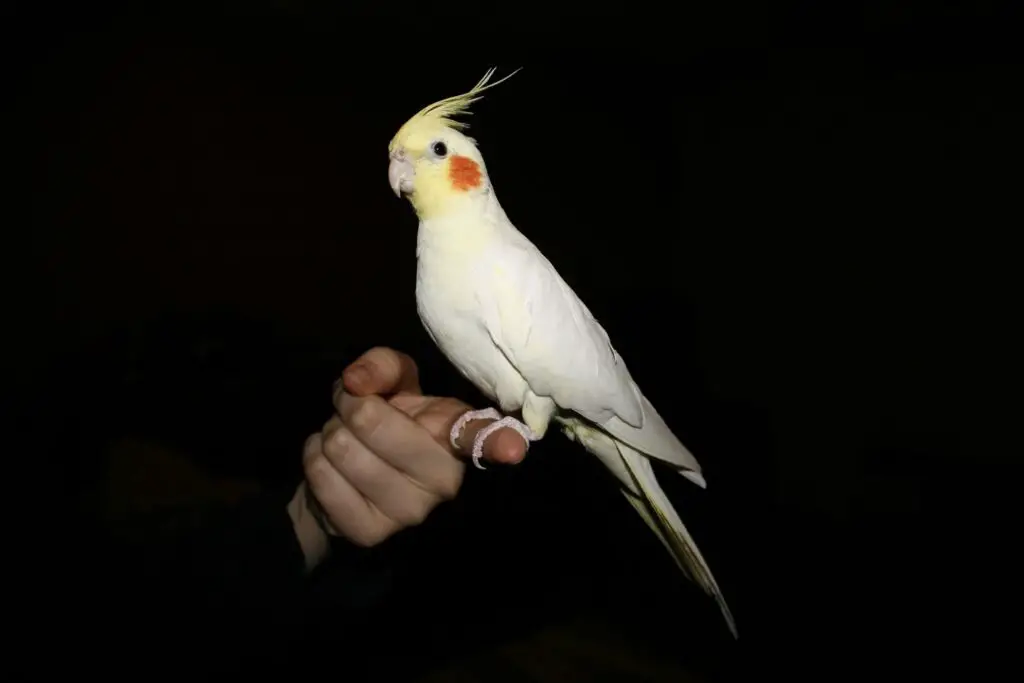
Conclusion
Proper nail maintenance is not only vital for your bird’s health and comfort but also for the strength of the bond you share with your feathered companion. By following the step-by-step instructions, understanding the importance of nail care, and providing a calm and reassuring environment, you can ensure that the process is as stress-free as possible for both you and your beloved cockatiels nails. Remember that safety and patience are key when it comes to trimming your cockatiel’s nails. If you’re unsure or uncomfortable with the process, consider seeking guidance from a veterinarian or an experienced avian groomer. With practice and care, you can maintain your cockatiel’s well-groomed feet and continue to enjoy the delightful presence of this charming bird in your life.
In addition to maintaining your cockatiel’s health and strengthening your bond, there are a few more important points to keep in mind regarding the art of nail trimming. First, it’s crucial to establish a regular schedule for nail maintenance. This will help prevent overgrown nails and make the trimming process less intimidating for your bird. Furthermore, always have the necessary tools on hand, such as a suitable pair of nail clippers designed for birds. These clippers will ensure precision and minimize the risk of injury to your cockatiel. Lastly, remember that each cockatiel is unique. Some may be more tolerant of nail trimming than others. Be patient and attentive to your bird’s signals during the process. If your cockatiel becomes too stressed or agitated, it’s okay to pause and try again later. Your bird’s comfort and safety should always be the top priority.
In mastering the art of cutting cockatiel nails, you’re not only taking an active role in your pet’s well-being but also fostering a trusting and loving relationship. With the knowledge and care you’ve gained, you can enjoy many happy years together with your feathered friend. If you are unsure about trimming your cockatiel’s nails or are uncomfortable doing it, seek assistance from a veterinarian or an experienced avian groomer. They can demonstrate the procedure and provide guidance. Nail trimming is just one aspect of grooming. Regularly inspect your cockatiel’s beak, feathers, and overall health. Maintaining a holistic approach to grooming and health care will ensure your pet’s well-being.

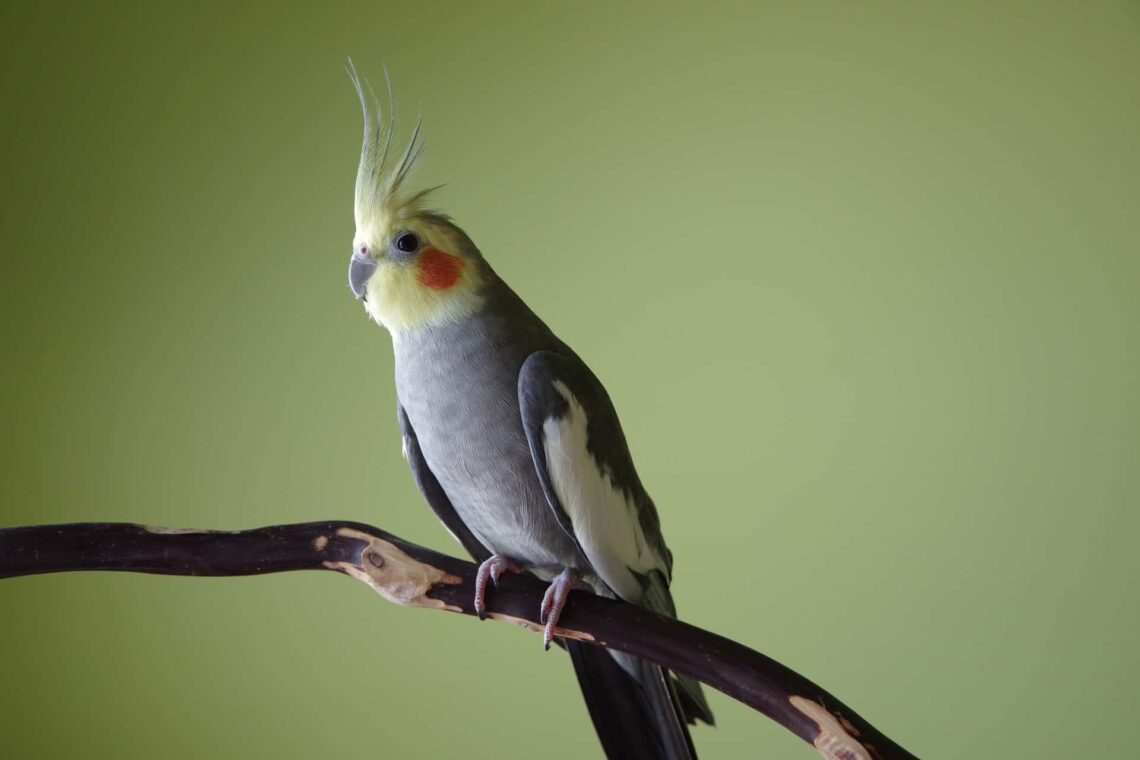
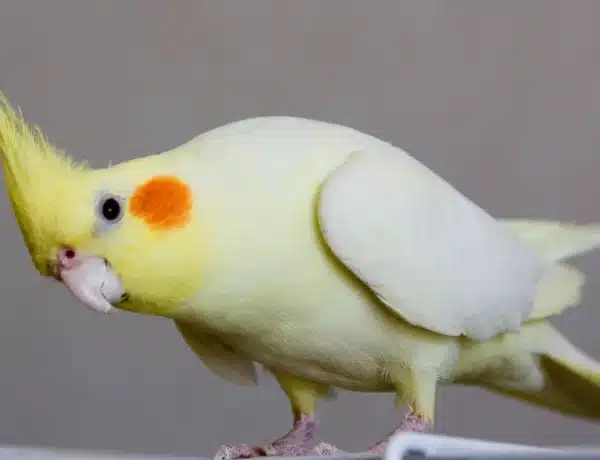
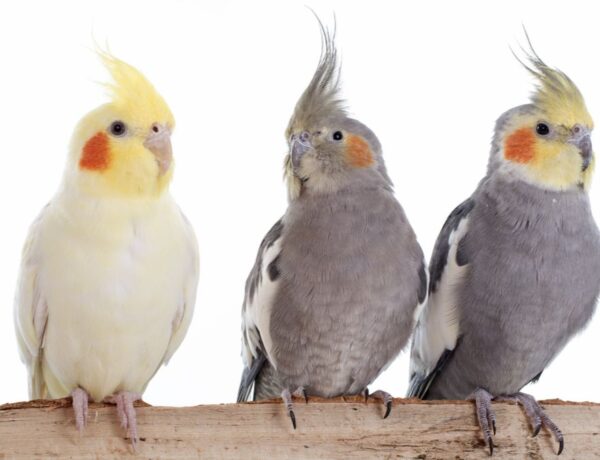
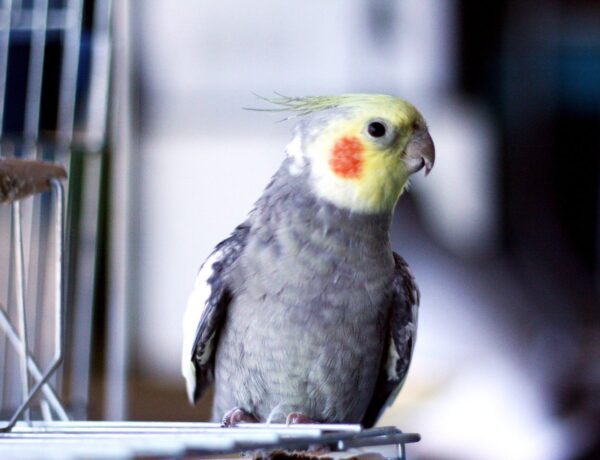
No Comments